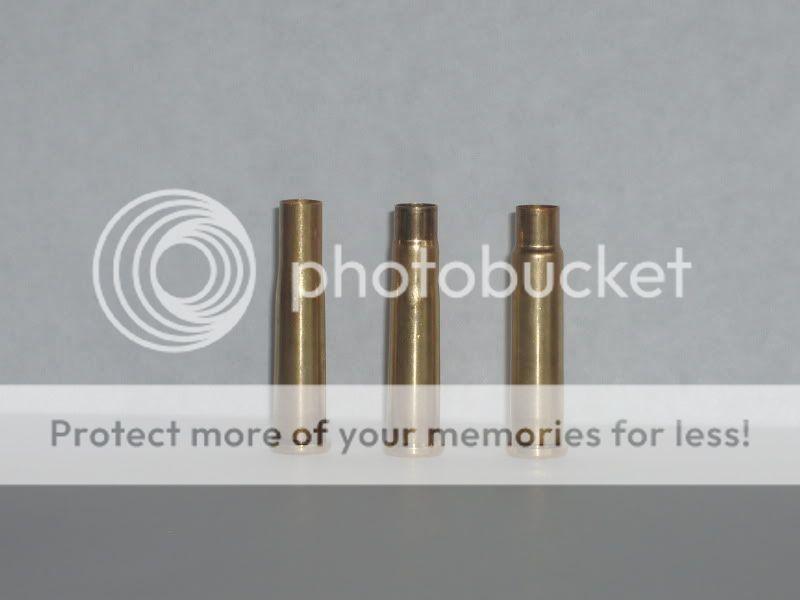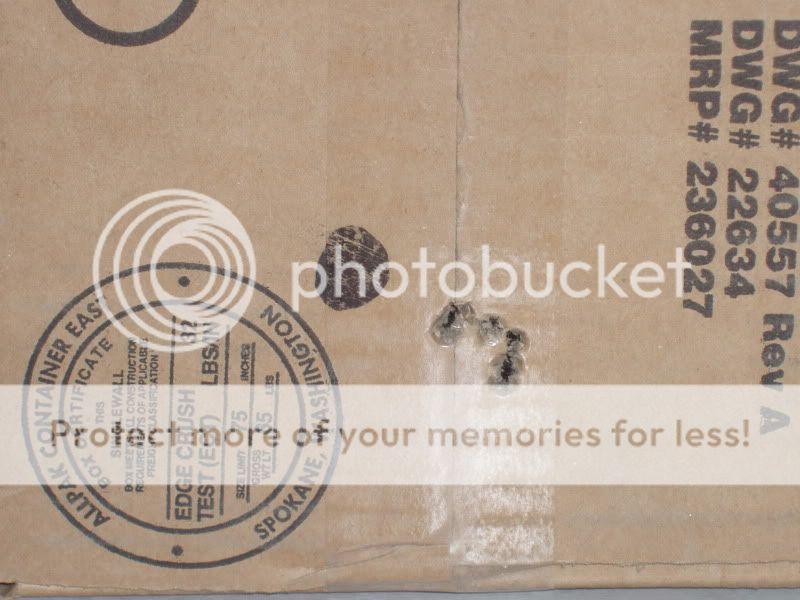Fiftydriver
Official LRH Sponsor
Sitting here today having some lunch and I came across some old test notes from some experimenting I did with the 22 K-Hornet and 218 Mashburn Bee. I have always had issues with these small wildcats fireforming brass. Not really in the fireforming but I always had issues with case wall thinning which I believe is always a problem.
After several upper level loads, it was not uncommon to see some case head seperation.
As such, I decided to try another method to form brass. I started with the 22 Hornet and ran virgin cases through a 6mm BR FL sizing die to expand the 22 cal necks up to 6mm. Because of the very thin brass, this necks up very easy. I did use a dry lube to help with this process. Then after the necks were necked up, I ran them into my 22 K-Hornet FL die to position the shoulder so that when I chambered a round it had solid contact with the chamber shoulder to support the case while fireforming to basically eliminate any case thinning while fireforming.
I had my reamer made so that the body section of the case is longer to offer a bit more powder capacity. admittedly not much but some. I had to order a reamer anyway so I had them grind it a bit special. Standard 22 K Hornet dies work perfectly well for reloading this slightly modified design. Below are some picture.

From left to right, virgin 22 Hornet case, 6mm Hornet with shoulder positioned for my reamer and the last is a standard 22 K-Hornet fireformed case.
The rifle used in this test is a Ruger M77/22hornet which I rebarreled with a Lilja #4, fluted 1-10 twist barrel with 24" finish length.

This picture shows standard fireforming loads shooting just conventional 22 Hornet ammo through a K Hornet type chamber in this rifle. These groups were fired at 100 yards off a solid shooting bench. They measured from 1.2" to 1.75".

This group was fired using the brass necked up to 6mm first and then sized back down to 22 cal with solid shoulder support. Not only did the group measure right at 0.5", this group was fired at 175 yards instead of 100 yards!!!!
Obviously the accuracy of fireforming loads improved dramatically and accuracy with formed brass remained this same level, very good. More importantly though, measuring case wall thickness was dramatically different. The cases that I necked up to 6mm first showed absolutely no case wall thinning.
In fact I took some cases and worked up a load using the 50 gr Sierra Blitzking and H-Lilgun. I worked up to 3050 fps with this bullet weight and decided to stop there. There were no pressure signs, no extraction issues, no case wall thinning, nothing but common sense says that chamber pressure were way higher then they should be so I toned down the velocity to 2950 fps which is still quite high for an Improved Hornet case but there are no pressure signs in any way and accuracy is still very good, 1/2 moa in good conditons.
I tested the 218 Bee case fireformed to the Mashburn configuration in the same way and had very similiar results.
Simply put, using this case forming method adds a step or two to forming cases but in the end, accuracy and case life are dramatically improved. Just figured I would offer this to those with similiar wildcats as a way to greatly improve the life of your brass and dramatically improve the accuracy of your fireforming loads.
Not long range but a trick to greatly improve consistancy and accuracy.
After several upper level loads, it was not uncommon to see some case head seperation.
As such, I decided to try another method to form brass. I started with the 22 Hornet and ran virgin cases through a 6mm BR FL sizing die to expand the 22 cal necks up to 6mm. Because of the very thin brass, this necks up very easy. I did use a dry lube to help with this process. Then after the necks were necked up, I ran them into my 22 K-Hornet FL die to position the shoulder so that when I chambered a round it had solid contact with the chamber shoulder to support the case while fireforming to basically eliminate any case thinning while fireforming.
I had my reamer made so that the body section of the case is longer to offer a bit more powder capacity. admittedly not much but some. I had to order a reamer anyway so I had them grind it a bit special. Standard 22 K Hornet dies work perfectly well for reloading this slightly modified design. Below are some picture.

From left to right, virgin 22 Hornet case, 6mm Hornet with shoulder positioned for my reamer and the last is a standard 22 K-Hornet fireformed case.
The rifle used in this test is a Ruger M77/22hornet which I rebarreled with a Lilja #4, fluted 1-10 twist barrel with 24" finish length.

This picture shows standard fireforming loads shooting just conventional 22 Hornet ammo through a K Hornet type chamber in this rifle. These groups were fired at 100 yards off a solid shooting bench. They measured from 1.2" to 1.75".

This group was fired using the brass necked up to 6mm first and then sized back down to 22 cal with solid shoulder support. Not only did the group measure right at 0.5", this group was fired at 175 yards instead of 100 yards!!!!
Obviously the accuracy of fireforming loads improved dramatically and accuracy with formed brass remained this same level, very good. More importantly though, measuring case wall thickness was dramatically different. The cases that I necked up to 6mm first showed absolutely no case wall thinning.
In fact I took some cases and worked up a load using the 50 gr Sierra Blitzking and H-Lilgun. I worked up to 3050 fps with this bullet weight and decided to stop there. There were no pressure signs, no extraction issues, no case wall thinning, nothing but common sense says that chamber pressure were way higher then they should be so I toned down the velocity to 2950 fps which is still quite high for an Improved Hornet case but there are no pressure signs in any way and accuracy is still very good, 1/2 moa in good conditons.
I tested the 218 Bee case fireformed to the Mashburn configuration in the same way and had very similiar results.
Simply put, using this case forming method adds a step or two to forming cases but in the end, accuracy and case life are dramatically improved. Just figured I would offer this to those with similiar wildcats as a way to greatly improve the life of your brass and dramatically improve the accuracy of your fireforming loads.
Not long range but a trick to greatly improve consistancy and accuracy.
